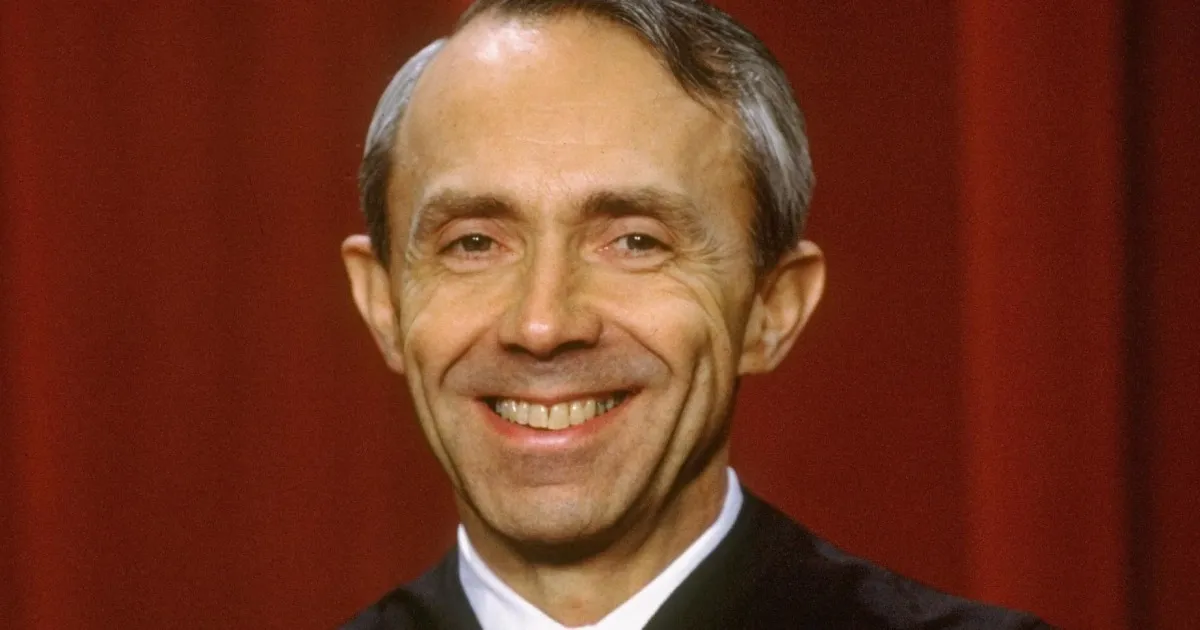
WASHINGTON — Retired Supreme Court Justice David Souter, a lifelong bachelor known for his affinity for a modest lifestyle in New Hampshire and his aversion to the political climate in Washington, D.C., passed away at his home on Thursday at the age of 85, according to a statement released by the court.
David Souter was appointed to the Supreme Court in 1990 by President George H.W. Bush, who sought to replace the liberal Justice William Brennan. Initially regarded as a stealth candidate, Souter was anticipated to be a reliable conservative vote. However, he soon disappointed many conservatives who had hoped he would firmly align with their values, particularly in matters concerning abortion. Instead, Souter emerged as a moderate, ultimately aligning more closely with liberal justices on key issues.
Chief Justice John Roberts paid tribute to Souter, stating, “Justice David Souter served our court with great distinction for nearly twenty years. He brought uncommon wisdom and kindness to a lifetime of public service. He will be greatly missed.” Souter's tenure on the court spanned nearly two decades, during which he significantly influenced several landmark decisions.
Upon his confirmation in a resounding 90-9 Senate vote, Souter was relatively unknown outside of New England. His unexpected trajectory as a moderate and, over time, a solid liberal vote on critical issues like abortion rights, the death penalty, and LGBTQ rights took both his supporters and critics by surprise. He famously avoided the social scene in Washington, preferring to lead a frugal lifestyle and retreat to his family home in New Hampshire whenever possible. Known for his simplicity, he often enjoyed a plain lunch of yogurt and a whole apple, core included.
One of Souter's most significant legacies is the profound effect he had on conservative legal activists. His unexpected decisions led to a rallying cry among Republicans: “No more Souters.” This phrase encapsulated their determination to ensure that future Republican presidents would appoint only thoroughly vetted justices who would align with conservative principles. In recent years, the Supreme Court has shifted further to the right, now boasting a 6-3 conservative majority.
Justice Souter's divergence from conservative expectations became glaringly evident during the 1992 Supreme Court case, Planned Parenthood v. Casey. This case posed a significant challenge to the established abortion rights affirmed by the 1973 Roe v. Wade ruling. Although conservatives anticipated a reversal of Roe with a conservative majority in the court, Souter, in collaboration with Justices Sandra Day O'Connor and Anthony Kennedy, upheld the core principles of Roe, while also modifying the legal framework for assessing abortion restrictions. It would take another 30 years before the court, now with a more predictable conservative majority, overturned Roe.
Additionally, in the contentious 2000 case of Bush v. Gore, Souter dissented alongside his liberal colleagues when the court halted the vote recount in Florida, a decision that ultimately secured the presidency for Republican candidate George W. Bush.
In 2009, at the relatively young age of 69, Souter chose to retire from the Supreme Court, opting to return to New Hampshire. His departure during President Barack Obama's administration, which allowed a Democratic president to appoint his successor, underscored Souter’s alignment with the liberal faction of the court. President Obama subsequently appointed Justice Sonia Sotomayor, marking a historic moment as she became the first Latina to serve on the Supreme Court.
Born in Massachusetts, David Souter pursued higher education at Harvard University, where he earned both undergraduate and law degrees. He also had the distinction of being a Rhodes Scholar at Oxford University. Before ascending to the Supreme Court, Souter practiced law in New Hampshire and served as the state's attorney general in 1976. He became a state judge two years later and was elevated to the New Hampshire Supreme Court in 1983. His career culminated in his appointment to the U.S. Supreme Court, where he left an indelible mark on American jurisprudence.